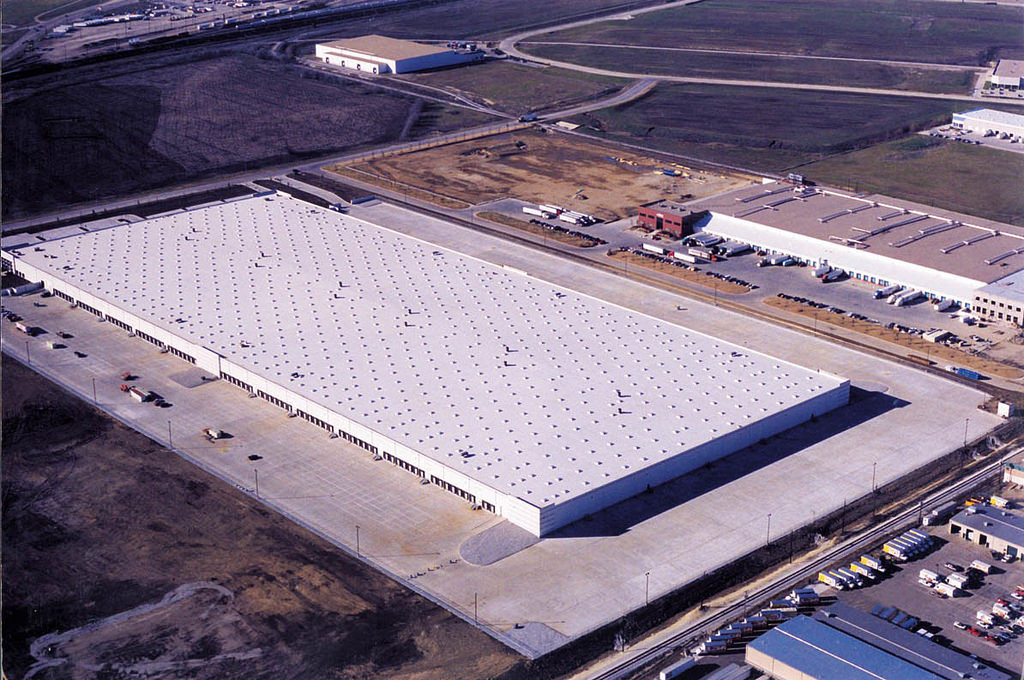
TPO
Thermoplastic Polyolefins (TPOs) in Roofing Applications
The use of thermoplastic polyolefins (TPOs) in roofing applications has increased significantly during the past several years. TPO membranes were first used as a roofing material in the early 1990s. As a non-roofing material, however, TPO’s have been used in exposed applications since the 1970s. On a global basis, TPOs are used by original equipment manufacturers for a variety of applications ranging from automotive applications (strut covers, air intake ducts, wheel well liners, air bag doors) to recreational applications (golf cart bodies, snowmobile belly pans, bodies for inline roller skates) to construction applications (geomembranes and as insulation and corrosion protection on gas and oil transmission lines).
Typically and for the roofing industry, TPO polymers are blends or alloys of polypropylene plastic or polyprolylene and ethylene propylene rubber (EPR) or ethylene propylene diene terpolymer rubber (EPDM). These alloys can be made either by mechanical mixing or by reactor blending using proprietary polymer-manufacturing processes. After further mixing with other additives, these polymer alloys are then formed into roofing membranes with a variety of properties.
TPOs are the “new generation” roofing membranes that combine attributes of two of today’s popular flexible single-ply membranes EPDM and PVC. These attributes include long-term weathering resistance, cold temperature flexibility, tear resistance, puncture resistance, chemical resistance and heat-seaming capability. TPO membranes can be manufactured in a range of colors, including black. In addition since TPOs are a true thermoplastic material, they do not cure after exposure to the elements, and they remain hot-air weldable throughout their service life.
Today, there are several brands of TPO membranes available in the commercial roofing industry. Each has a unique formulation and no two are exactly alike in look, feel, or physical property characteristics. Probably the most visible differing physical property attribute of all the TPO sheets currently available is their relative stiffness. Some TPOs feel relatively soft and flexible, while others feel more rigid, although this stiffness has no relation to cold temperature flexibility. The stiffness characteristics affect only the membrane installation process with claims by some that their stiffer sheets aid in the seam welding process but may be a drawback in flashing applications where more flexibility is desired. Typically, however, all TPO membranes exhibit good physical property characteristics including resistance to UV degradation, heat aging, cold temperature flexibility, puncture resistance and tear strength.
In addition, TPO membranes are highly resistant to a variety of chemicals and materials, including aged asphalt and polystyrene.
Although TPO materials are not as inherently fire-resistant as chlorinated materials, TPO roofing materials can be made fire resistant by adding fire retardant chemicals during the compounding process. In doing so, TPO roof membrane assemblies can achieve Underwriters Laboratories (UL) Class A fire resistance listings. Beyond fire-testing, TPOs have been approved by Factory Mutual for Class 1 construction with wind resistance classifications as high as 1-270. In addition, ASTM is currently developing a material specification for TPO membranes similar to those that currently exist for EPDM and PVC roofing materials.
Reinforced TPO membranes can be produced by calendering with lamination, extrusion with lamination or extrusion-coating techniques. In all TPO manufacturing processes, the compounded material is heated to a high temperature to allow the forming process and the reinforcing process to occur. Although most TPO membranes are reinforced with polyester, fiberglass or a combination of both unreinforced TPO membranes are available.
TPO membranes are installed in much the same manner as other thermoplastic, hot-air welded membranes. TPOs can be mechanically-attached, adhered, stone or paver ballasted, or installed as a vented roofing system. TPO manufacturers provide various accessories specifically designed for their membranes such as prefabricated flashings, adhesives, etc.
TPO membrane roofing systems can be used in most commercial applications and can be installed on flat, low-sloped or certain steep-sloped substrates.
In a relatively short period of time, TPO roofing membranes have gained recognition and acceptance among roofing contractors, consultants, architects and building owners.
